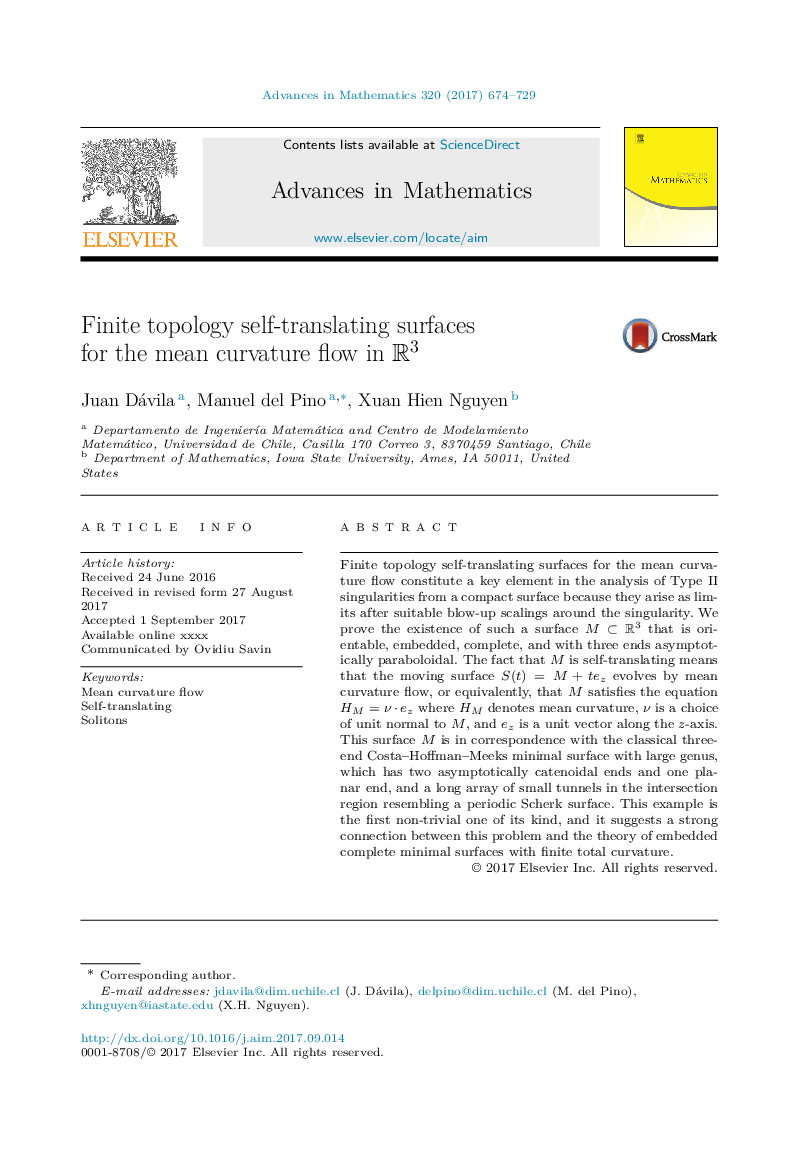| Article ID | Journal | Published Year | Pages | File Type |
|---|---|---|---|---|
| 5778339 | Advances in Mathematics | 2017 | 56 Pages |
Abstract
Finite topology self-translating surfaces for the mean curvature flow constitute a key element in the analysis of Type II singularities from a compact surface because they arise as limits after suitable blow-up scalings around the singularity. We prove the existence of such a surface MâR3 that is orientable, embedded, complete, and with three ends asymptotically paraboloidal. The fact that M is self-translating means that the moving surface S(t)=M+tez evolves by mean curvature flow, or equivalently, that M satisfies the equation HM=νâ
ez where HM denotes mean curvature, ν is a choice of unit normal to M, and ez is a unit vector along the z-axis. This surface M is in correspondence with the classical three-end Costa-Hoffman-Meeks minimal surface with large genus, which has two asymptotically catenoidal ends and one planar end, and a long array of small tunnels in the intersection region resembling a periodic Scherk surface. This example is the first non-trivial one of its kind, and it suggests a strong connection between this problem and the theory of embedded complete minimal surfaces with finite total curvature.
Keywords
Related Topics
Physical Sciences and Engineering
Mathematics
Mathematics (General)
Authors
Juan Dávila, Manuel del Pino, Xuan Hien Nguyen,
